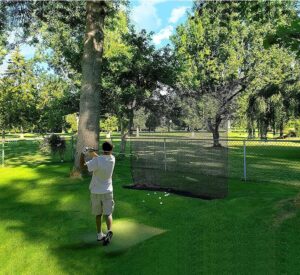Contact Us: [email protected] WhatsApp: +86-1365-3417-367
Introduction
Measuring the height of a volleyball net with precision is a fundamental aspect of setting up a fair and enjoyable game.
Whether you’re setting up a court for a professional tournament or a casual backyard match, understanding the correct net height is crucial.
This guide, presented by NettingExpert, will provide you with detailed steps and tips to ensure your volleyball net meets the official height requirements.
Our aim is to help you create an optimal playing environment that adheres to the standards of the sport.
Understanding Volleyball Net Height Standards
Before measuring, it’s important to understand the official height requirements:
- Men’s Competitions: The standard net height is 2.43 meters (7 feet 11 5/8 inches).
- Women’s Competitions: The net should be set at 2.24 meters (7 feet 4 1/8 inches).
- Youth Games: Net heights can vary, generally lower to accommodate younger players.
Knowing these standards is the first step in setting up a game that aligns with official volleyball rules.
Tools Needed for Accurate Measurement
To measure the volleyball net height correctly, you need the right tools:
- Measuring Tape: A reliable measuring tape is crucial for getting an accurate read.
- Level: This ensures your measuring tape is perfectly vertical when measuring the net height.
- Adjustable Poles (if available): These can make setting the correct height easier, especially if they come with marked measurements.
With these tools in hand, provided by NettingExpert, you’re ready to measure your net with precision.
Step-by-Step Guide to Measuring the Net Height
Follow these steps to ensure accurate measurement:
- Position the Net: Start by ensuring that the net is evenly extended and secured to the poles on either side of the court.
- Adjust to the Approximate Height: If your poles are adjustable, set them to the approximate height for your category (men’s, women’s, or youth).
- Measure from the Ground Up: Place your measuring tape on the ground directly under the net’s midpoint. Extend the tape vertically to the top of the net, using a level to ensure accuracy.
- Check for Even Tension: The net should be taut across the entire width. A sagging or overly tight net can affect the measurement.
- Verify at Various Points: After measuring the center, check the height at several points along the net, including near the poles, to ensure it’s uniform.
Common Measuring Mistakes and How to Avoid Them
Avoid these common mistakes for a flawless setup:
- Ignoring the Level: Always use a level for a straight, vertical measurement.
- Forgetting Net Tension: A net that is too loose or too tight can give an incorrect height reading.
- Not Checking Multiple Points: The net height should be consistent across its entire length, so measure at various points, not just the center.
Additional Tips for Precise Measurement
- Ideal Conditions: Measure in calm weather conditions to avoid net swaying.
- Regular Checks: Frequently check the net height before games, as it can shift during play or due to environmental factors.
Conclusion
Correctly measuring the height of a volleyball net is crucial for ensuring fair play and adherence to official volleyball standards. By following the steps outlined in this guide by NettingExpert, you can confidently prepare your court for any level of competitive play. Remember, precision in setup leads to excellence in gameplay.

